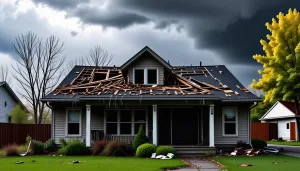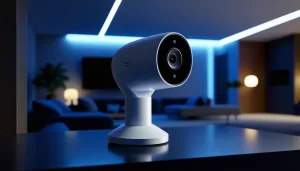Installing central air conditioning can be a transformative upgrade for your home, but understanding the installation costs involved is crucial for making informed decisions. Several factors significantly influence these costs, and being aware of these can help homeowners budget appropriately and avoid unexpected expenses.
Firstly, the size of your home plays a decisive role in the cost of an HVAC system installation. Larger homes require more extensive ductwork and powerful air conditioning units, which tend to be more expensive both in terms of equipment and labor. Consequently, the bigger your living space, the higher the expenditure will likely be.
The complexity of the installation is another important consideration. Homes with existing ductwork in good condition will generally face lower costs compared to homes that require extensive modifications or completely new duct systems. Furthermore, multi-story homes often involve more complicated installation processes due to the added difficulty of routing ducts and installing vents across different levels.
The specific type of air conditioning unit you choose also impacts the overall cost. High-efficiency models might have a higher initial price tag but can lead to energy savings over time, which will be discussed later in the article. Here’s a general comparison of some common types:
| Type of System | Initial Cost | Efficiency |
| Standard Split-System | Moderate | Good |
| Heat Pump System | Higher | Very Good |
| Packaged Central Air | Variable | Moderate |
Geographic location and local climate conditions can also influence costs. In warmer climates where air conditioning is in high demand, contractors might charge more due to increased business. Conversely, in cooler regions, you might find better deals.
Installation costs are further affected by permits and regulations unique to each municipality. Always check your local building codes and permit requirements. Skipping this step can lead to fines and additional costs down the line.
The choice of contractor immensely impacts installation expenditures. Experienced contractors with glowing reviews might charge a premium for their expertise and reliability, but their work often results in fewer maintenance issues long term. Therefore, evaluating a contractor’s experience against their quote is an essential part of the decision-making process.
Being aware of these variables helps in better allocating your financial resources. Evaluating them will enable you to balance the need for an efficient and effective system with your budget constraints, ensuring a choice that delivers both comfort and value.
comparing different types of systems
Choosing the right type of central air conditioning system involves a detailed comparison of various options available in the market. This decision significantly affects both the initial installation costs and the long-term efficiency of your HVAC system. Understanding the distinctions between these systems can guide you in making an informed choice that aligns with your home’s needs and your budget.
1. Standard Split-System Air Conditioner
– Structure: This system comprises an outdoor unit, which includes the condenser and compressor, and an indoor unit housing the evaporator coil.
– Installation Costs: Generally moderate, these systems are cost-effective and widely used in residential settings.
– Advantages: Known for their reliable cooling efficiency, split systems are suitable for most homes with existing ductwork. Maintenance is straightforward, which can reduce long-term service costs.
– Considerations: While the initial outlay is manageable, efficiency could be compromised in poorly insulated homes, leading to higher energy bills.
2. Heat Pump System
– Structure: Heat pumps are versatile as they provide both heating and cooling, making them ideal for moderate climates.
– Installation Costs: Higher than split systems, primarily due to their dual functionality.
– Advantages: These systems offer superior efficiency, often translating to significant savings on energy bills over time. Inverter technology allows for variable speed operation, which optimizes energy use.
– Considerations: Although they save money on energy, the initial financial investment is considerable. Moreover, heat pumps may struggle in extremely low temperatures, necessitating auxiliary heating sources.
3. Packaged Central Air Conditioner
– Structure: All components – compressor, condenser, and evaporator – are housed within a single cabinet, typically placed on the roof or a concrete slab adjacent to the home.
– Installation Costs: Highly variable depending on the additional modifications needed for fitting.
– Advantages: These systems save space indoors and are easier to install in setups where indoor space is limited.
– Considerations: Efficiency can vary widely, so it’s crucial to select a unit that matches your home’s cooling load precisely to avoid inefficiencies.
4. Ductless Mini-Split System
– Structure: Composed of one or more indoor units connected to an outdoor compressor. They don’t require ductwork, thus simplifying installation.
– Installation Costs: Higher individual unit cost, but savings on ductwork can offset this.
– Advantages: Ideal for homes without existing ducts or for zones that require independent temperature control (zoned cooling).
– Considerations: While there is significant flexibility in installation, those needing cooling throughout a larger home may find costs adding up due to the need for multiple units.
5. Geothermal Heat Pump System
– Structure: This system uses the stable temperatures of the ground or water to cool and heat your home.
– Installation Costs: Among the highest due to the complexity of ground loop installation.
– Advantages: Extremely energy-efficient and environmentally friendly. Long-term savings can be substantial despite the upfront costs.
– Considerations: Not every property is suitable due to geological constraints. The payback period can be long, although generous government incentives can help lower barriers.
Each of these systems presents numerous opportunities and challenges. When comparing them, consider how the installation costs and their associated energy efficiencies will impact your overall expenses and environmental footprint over time. A detailed evaluation of these systems in terms of their structural requirements and suitability to your home’s layout, as well as their operational costs, will enable a choice that meets your cooling needs without straining your budget.
additional expenses to consider
When planning for the installation of a new central air conditioning system, it’s important to account for additional expenses beyond the primary equipment and labor. These often-overlooked costs can significantly impact your budget if not anticipated in advance.
One such expense involves electrical upgrades. Depending on the power demands of the new system, you may require an upgraded electrical panel or additional wiring. Older homes, in particular, might not be equipped to handle the load of a modern HVAC system, necessitating costly electrical modifications.
Ductwork modifications or repairs are another potential expense. Even if your home already has ductwork, it might not be compatible with your new air conditioning system, requiring modifications to ensure efficient airflow. In some cases, existing ducts may have leaks or insulation issues that must be addressed to optimize system performance and energy efficiency.
Permitting fees should also be considered in your budget. Installing a central air conditioning system often requires local permits, and fees can vary widely based on municipal regulations. Failing to obtain the necessary permits can lead to severe penalties and could complicate any future resale of your property.
Additionally, don’t overlook the need for a thermostat upgrade. Advanced air conditioning systems typically work best with smart or programmable thermostats, which allow for more precise control over your home’s climate. While these thermostats can provide energy savings over time, they do add an upfront cost to your HVAC installation project.
Landscaping changes might be necessary if your installation requires an outdoor unit that impacts your current yard design. Removing or rearranging landscaping features to make room for the air conditioning unit could incur additional landscaping fees.
Another factor is the disposal of old equipment. If you’re replacing an existing system, you’ll need to remove and responsibly dispose of the old HVAC components. Some contractors include this service in their estimates, but others might charge extra, increasing your overall spending.
Lastly, ongoing maintenance contracts are essential for keeping your new system in peak condition. These contracts typically cover routine inspections and cleanings, crucial for preventing costly repairs and extending the lifespan of your air conditioning system. While this is a recurring expense, it’s a wise investment in the long-term performance and efficiency of your system.
Carefully considering these additional expenses when planning for installation can help you develop a more comprehensive budget and avoid surprises that could delay your project or inflate your costs unexpectedly.
potential savings and benefits
Investing in a central air conditioning system can lead to substantial savings over time, which often offset initial installation costs. One of the most significant advantages is the potential reduction in energy bills. Modern HVAC systems, particularly high-efficiency models, utilize advanced technology to cool your home more effectively while consuming less energy. This improved efficiency not only lowers monthly utility bills but also lessens your home’s overall environmental impact by reducing energy consumption.
Moreover, high-efficiency systems often come with state-of-the-art features like variable speed compressors and smart thermostats. These components allow the system to adjust its output according to the temperature needs of your home in real-time. By maintaining consistent temperatures and avoiding energy waste, these systems contribute to noticeable cost savings over several years. Many households find that while the upfront cost of these advanced systems may be higher, the savings on energy expenditures can lead to a complete payback within just a few years.
Another benefit of installing central air conditioning involves the increased comfort it brings to your living environment. Unlike window units or portable air conditioners, central HVAC systems distribute air evenly throughout a home, eliminating hot spots and ensuring every room remains comfortably cool. Some systems also include features that enhance indoor air quality, such as advanced filtration and humidity control, which can be particularly beneficial for those with allergies or respiratory concerns.
Additionally, the presence of a modern, efficient air conditioning system can enhance the resale value of your home. Buyers often consider central air conditioning a key component of a comfortable home, particularly in regions with hot climates. A well-maintained HVAC system can make your property more appealing and could lead to quicker sales and better offers when you’re ready to move.
Furthermore, some installations qualify homeowners for tax incentives or rebates, which can significantly reduce the effective cost of purchasing and installing the system. Many governments and utility companies offer these incentives to encourage the adoption of energy-efficient technologies, thus giving you financial relief and promoting environmental responsibility.
In summary, while the initial installation costs for a central air conditioning system can be significant, the potential savings in energy costs, enhanced comfort, and increased home value create compelling financial and practical benefits. Understanding these advantages can make the investment in a new HVAC system an attractive proposition, providing not just immediate comfort but also ongoing financial returns and environmental benefits.
tips for finding the right contractor
Finding the right contractor is a crucial step in ensuring a successful and cost-effective central air conditioning installation. To start, it’s important to conduct thorough research. Begin by gathering recommendations from friends, family, or neighbors who have recently had HVAC work done. Personal referrals can offer firsthand insights into the reliability and quality of a contractor’s work.
Next, check online reviews and ratings on platforms such as Google, Yelp, and the Better Business Bureau. Reading through customer feedback can provide additional perspectives on a contractor’s performance. However, be sure to keep an eye out for exaggerated claims, whether positive or negative, and focus on consistent patterns in the feedback.
Once you have a shortlist of potential contractors, verify their credentials. A reputable HVAC contractor should be licensed, insured, and bonded. Licensing ensures that they meet local professional standards and understand building codes and regulations, while insurance protects you from liability in case of accidents during the installation process.
Another effective strategy is to request multiple quotes. Reaching out to at least three contractors allows you to compare pricing, services offered, and project timelines. When reviewing quotes, be cautious of unusually low bids, as these can sometimes indicate inferior products or lackluster service that may lead to higher costs in the long run, due to poor performance or increased maintenance needs.
It’s also beneficial to inquire about warranties and service guarantees. The best contractors stand behind their work, offering assurances on both equipment and labor. Clarifying these terms upfront can save you potential headaches if problems arise post-installation.
Finally, communication is key. Choose a contractor who is responsive and willing to answer your questions in detail. Their willingness to explain options and discuss the benefits and costs of various systems can be a strong indicator of their professionalism and customer commitment. A contractor who takes the time to understand your specific needs and preferences is likely to tailor their services to best fit your home’s HVAC requirements, ensuring a smoother installation process.
By approaching this process with diligence and attention to detail, you can find a reliable contractor who will help you achieve a successful central air conditioning installation, ensuring the comfort and efficiency of your home for years to come.
In conclusion, the true cost of installing central air conditioning encompasses more than just the initial expenditure on equipment and labor. By considering various factors such as system type, additional expenses, and the potential savings and benefits, homeowners can make informed decisions that align with their budgets and comfort needs. Furthermore, choosing the right contractor is crucial for a hassle-free installation experience. Ultimately, a well-planned and executed HVAC installation can enhance your home’s comfort, energy efficiency, and value, rewarding you with long-term satisfaction and financial savings.





